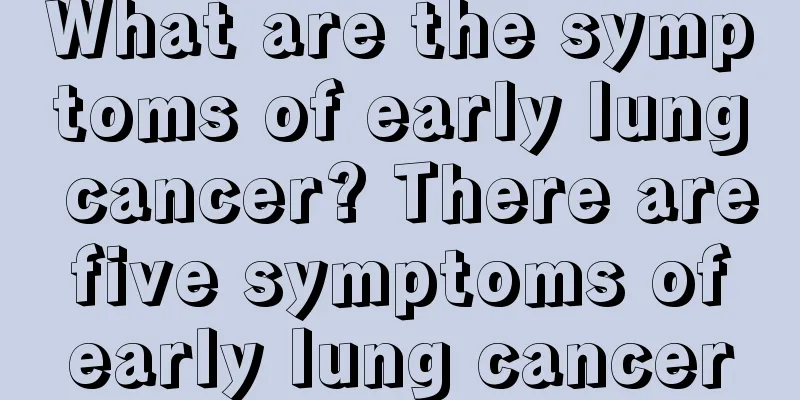What are the symptoms of primary liver cancer? Six symptoms of primary liver cancer

|
Liver cancer is divided into two types: primary liver cancer and secondary liver cancer. Secondary liver cancer is caused by the metastasis of cancer cells of primary liver cancer. The onset of primary liver cancer is often hidden. Liver cancer is often discovered accidentally during follow-up of liver disease or physical examination using AFp and B-type ultrasound. At this time, the patient has no symptoms and lacks physical signs of the tumor itself during physical examination. This stage is called subclinical liver cancer. Once symptoms appear, the patient who comes to the doctor has mostly entered the middle and late stages of the disease. The clinical manifestations of liver cancer at different stages are significantly different. (I) Symptoms of liver cancer Liver pain, fatigue, poor appetite and weight loss are the most characteristic clinical symptoms 1. Pain in the liver area: The most common type is intermittent, persistent dull pain or bloating. It is caused by the rapid growth of the cancer, which tightens the liver capsule. The tumor invades the diaphragm. The pain may radiate to the right shoulder or right back. A tumor that grows to the right back may cause right waist pain. Sudden onset of severe abdominal pain and peritoneal irritation signs indicates bleeding under the capsule of the cancerous nodule or rupture into the abdominal cavity. 2 Gastrointestinal symptoms: decreased appetite, indigestion, nausea, vomiting and diarrhea are easily overlooked due to their lack of specificity. 3. Fatigue, weight loss and general weakness. In the late stage, a few patients may develop cachexia. 4 Fever: Generally, it is a low-grade fever that occasionally reaches above 39°C and is continuous or low-grade fever in the afternoon or a remittent high fever. Fever is related to the absorption of necrotic products of the tumor. Tumor compression or invasion of the bile duct may cause biliary infection. 5. Symptoms of metastasis: There are corresponding symptoms at the place where the tumor metastasizes, which sometimes become the initial symptoms of liver cancer. For example, metastasis to the lungs can cause coughing and hemoptysis. Pleural metastasis can cause chest pain and bloody pleural effusion. Cancer embolism to the pulmonary artery or branches can cause pulmonary infarction, which can cause sudden severe dyspnea and chest pain. Cancer embolism blocking the inferior vena cava can cause severe edema of the lower limbs and even a drop in blood pressure; blocking the hepatic vein can cause Budd-Chiari syndrome and lower limb edema. Metastasis to the bones can cause local pain or pathological fractures. Metastasis to the spine or compression of the spinal nerves can cause local pain and paraplegia. Intracranial metastasis may cause corresponding localization symptoms and signs. Intracranial hypertension can also lead to brain herniation and sudden death. 6 Other systemic symptoms: Endocrine or metabolic syndromes caused by abnormal metabolism of the tumor itself or various effects of cancer tissue on the body are called paraneoplastic syndromes. Sometimes they may precede the symptoms of liver cancer itself. Common symptoms include: ⑴ Spontaneous hypoglycemia: 10-30% of patients may experience it because liver cells can ectopically secrete insulin or insulin-like substances; or the tumor inhibits insulinase or secretes a pancreatic β-cell stimulating factor or there is excessive glycogen storage; it can also be caused by excessive glucose consumption by liver cancer tissue. Severe cases of this disease can cause coma, shock and death. Correct judgment and timely symptomatic treatment can save the patient from death. ⑵ Polycythemia: It may occur in 2-10% of patients and may be caused by increased erythropoietin in the circulation. ⑶ Other rare diseases include hyperlipidemia, hypercalcemia, carcinoid syndrome, early and gonadotropin-secreting syndrome, cutaneous porphyria and dysfibrinogenemia, which may be related to abnormal protein synthesis, ectopic endocrine secretion and porphyrin metabolism disorders in liver cancer tissue. |
<<: What are the early symptoms of liver cancer? Five major symptoms of early liver cancer
Recommend
Things to note when there is excess hormone secretion
What to do if there is excess hormone secretion? ...
6 unexpected causes of insomnia
If you don’t drink coffee or tea before going to ...
How to remove the hot pot smell from hair without washing it
Have you ever gone to a hot pot restaurant and ca...
Why does the big toe nail become thicker
Nails are one of the important accessories of our...
Why are the corners of my eyes always itchy?
Itching in the corners of the eyes is a problem t...
What are the small issues to pay attention to in lung cancer care? 4 key issues to pay attention to in lung cancer care
Many people feel bad when they hear that they hav...
What can I eat to grow taller?
Dietary therapy can effectively help some of our ...
Can lung cancer develop from asthma?
Asthma is a common and frequent respiratory disea...
The efficacy and function of Codonopsis pilosula
I don’t know if you have ever seen the plant call...
What are the symptoms of nasopharyngeal cancer and how to care for it
What are the symptoms of nasopharyngeal cancer? H...
What are the common sites of melanoma? What are the symptoms of melanoma?
The surface of the skin is a common site for mela...
Introduction to the four major causes of cervical cancer
Depending on the cause of cervical cancer, its sy...
Can I drink mung bean water while taking medicine
We all know that mung beans can clear away heat a...
Prostate cancer treatment costs
Prostate cancer is one of the most common maligna...
How is the effect of interventional treatment for advanced liver cancer? 6 basic common sense about interventional treatment for advanced liver cancer
Late stage liver cancer is a very serious stage o...









